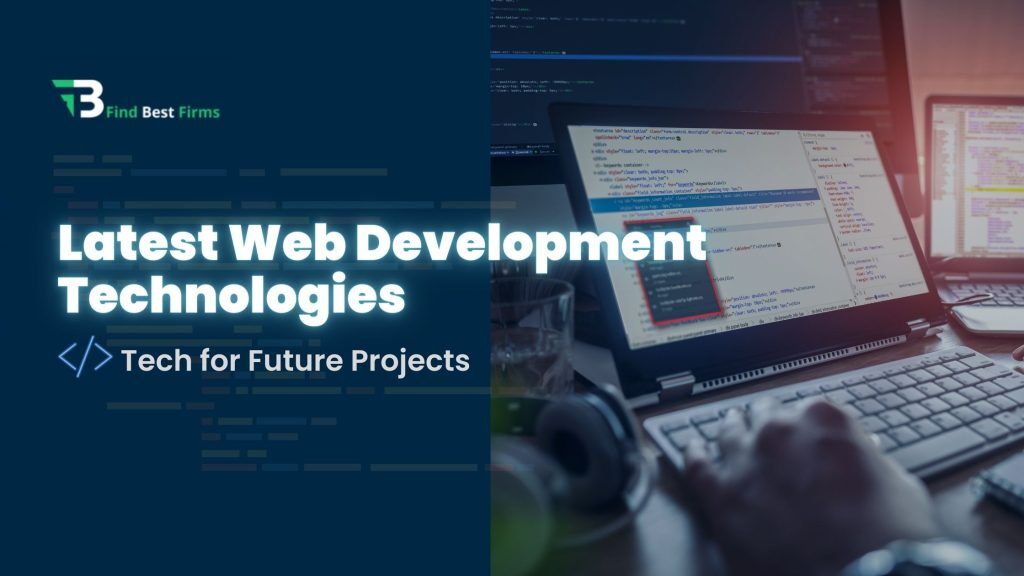Many top web development companies have already started to implement the latest technologies and trends after the boom in Artificial Intelligence (AI) in web dev.
Many businesses are using the latest changes and cutting-edge solutions to enhance the user experience and improve conversions.
This blog post addresses the latest web development technologies that you might need for your next project.
Reasons You Should Know About These Updates?
Technologies offer significant benefits. They can improve website performance, leading to faster loading times and a smoother user experience.
This translates to happier users and, potentially, increased conversions. Additionally, new features like AI-powered chatbots can enhance customer service and engagement.
Understanding the Difference: Technologies vs. Trends
Before diving in, let’s clarify the distinction between web development technologies and trends.
Web development technologies
Web development technologies are the building blocks – the specific tools, frameworks, and languages we use to construct websites and web applications.
These include –
- JavaScript frameworks like React and Angular
- server-side technologies like Node.js
- APIs that connect applications to external data sources, and more
Web development trends
Web development trends are broader movements and ever-evolving practices that define the direction of the field. Trends are influenced by advancements in underlying technologies, evolving user behavior patterns, and the adoption of new design principles.
For instance,
- The current focus on mobile-first design,
- The rise of Progressive Web Apps (PWAs) that offer app-like experiences on mobile devices
- The increasing integration of Artificial Intelligence (AI) and Machine Learning (ML) functionalities into web experiences are all trends shaping the future of web development.
Top Technologies Powering Modern Web Development
Now that we understand the difference, let’s explore some of the most impactful technologies shaping the web today:
Popular Front-End Technologies:
1. JavaScript Frameworks:
React: A powerful and flexible framework known for its component-based architecture and virtual DOM, making it popular for building complex and dynamic user interfaces.
Have Project? Browse and hire Top Reactjs Development Companies
Angular: Ideal for large-scale, enterprise-level applications due to its comprehensive structure, built-in features, and strong tooling support.
Browse and hire Top AngularJS Development Companies
Vue.js: Known for its ease of learning, flexibility, and progressive nature, making it a great choice for smaller projects or those requiring a fast learning curve.
2. Headless CMS
A content management system (CMS) with a decoupled front-end and back-end. This allows for greater flexibility in choosing a front-end framework while managing content efficiently in the back-end.
3. WebAssembly (Wasm)
Improves web app performance by allowing developers to use languages like C++ and Rust for code execution in browsers, leading to faster load times and richer user experiences.
4. Progressive Web Apps (PWAs)
Offer an app-like experience on mobile devices without requiring installation from an app store.
PWAs benefit from features like push notifications, offline functionality, and home screen icons, leading to greater user engagement.
5. Single Page Applications (SPAs)
Load a single HTML page initially and dynamically update the content without full page reloads, resulting in a smoother and more responsive user experience.
Back-End Technologies to Consider:
6. Node.js
A popular JavaScript runtime environment that allows developers to build scalable server-side applications. Its asynchronous nature makes it ideal for real-time applications and data-intensive tasks.
7. Serverless Architecture
An approach where developers focus on writing code without managing servers. Cloud providers handle server provisioning and scaling, reducing development and maintenance costs.
8. GraphQL
An API query language that allows developers to efficiently request specific data from APIs, improving performance and reducing over-fetching of unnecessary information.
9. Databases (NoSQL, SQL)
Choosing the right database type (relational vs. non-relational) is crucial for efficient data storage and retrieval depending on the application’s needs.
10. Cloud Computing Platforms (AWS, Azure, GCP):
These platforms offer a wide range of services for building, deploying, and scaling web applications, providing flexibility and cost-efficiency.
Emerging Web Development Technologies
As technology continues to evolve, several emerging trends are poised to revolutionize web development:
AI and ML Integration: AI and ML are reshaping web development by enabling personalized experiences, intelligent automation, and data-driven insights.
WebAssembly’s Growth: WebAssembly is expanding its use cases beyond performance optimization, enabling complex computations and even running entire applications in the browser.
Web 3.0 and dApps: The rise of blockchain technology is paving the way for decentralized applications (dApps) and the evolution of Web 3.0, promising a more decentralized, secure, and transparent web.
Voice Search Assist: With the proliferation of voice-enabled devices, optimizing websites for voice search is becoming increasingly important for reaching and engaging users.
Embrace the Future of Web Development
Web development will continue to evolve, and staying informed about the latest technologies and trends is vital for creating successful web experiences.
By understanding the difference between trends and foundational technologies, you can make informed decisions about the tools and approaches you use to build modern, performant, and future-proof web applications.
Looking to Hire a Developer? Browse Top Mobile App Development Companies
So, keep exploring, learning, and adapting to ensure your website is up to date with the latest technologies for higher security, conversion, and the best user experience.
Read our latest issue on – Top Award Winning Digital Agency Around the World

